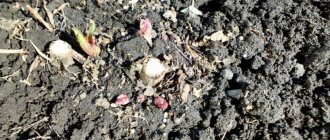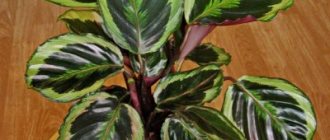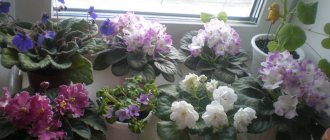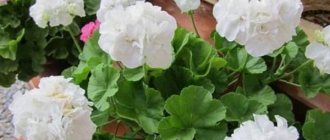Author: Millefeuille
August 13, 2022 08:48
Community: Facts
Tags: stuff interesting nightshade plants facts flora
15373
27
You can’t even imagine how many interesting, fantastic, beautiful and unexpected things one nightshade family can contain. The mere fact that they all contain poison is already interesting in itself. Let's tell you about some representatives in more detail, maybe you didn't know this.
True, some representatives are very poisonous
0
Source:
A fairly tenacious plant of the nightshade family, distributed in southern Europe, Africa, as well as in the Baltic states and the European part of Russia, in the Crimea and the Caucasus. It grows along the edges of fields, in vegetable gardens and wastelands. The plant is poisonous in its entirety, the seeds are especially dangerous - 150 very small, black seeds - certain death. Although the plant itself is unusually beautiful, very unpretentious, in small doses it is medicinal and therefore is cultivated for garden plantings (Datura metel), by breeding more and more new varieties, different in color and size of flowers.
0
Source:
0
Source:
0
Source:
Features of nightshade plants, distinctive features
Nightshade plants, the list of which is periodically updated due to the development of new hybrids, belong to the dicotyledonous family. It includes 90 genera. Tomatoes, peppers, eggplants, and potatoes are present in the diet of almost every person.
Plants have a number of distinctive features:
- Aroma. The skin of some nightshade species is covered with glands that can release substances into the atmosphere that have a characteristic odor. Volatile compounds include amyl alcohol, hexanal, phenylacetaldehyde, and geranylacetone.
- Compound. Few nightshade crops can be eaten. The tissues (fruits, tubers, leaves) contain solanine, a toxic substance that can cause severe intoxication. High concentrations are observed in potato tubers with greenish skin.
- Flowers. Almost all types of nightshades have flowers of the same structure. Double perianth, sepals, stamens and petals – 5 pcs. The corolla is sphenoletal.
- Fruit. There are 2 main types - boxes and berries. The former are found in eggplant, potatoes and tomatoes, and the latter in tobacco, pepper and petunia. The fruits of most poisonous nightshade varieties are capsules.
- Leaves. They have different shapes - incised, jagged, solid. Simple leaves are located one after another on the stem.
The fruits of some nightshade crops contain alkaloids that have a detrimental effect on the animal or human body. Poisonous species are not eaten even after heat treatment.
Cocona
Cocona is often called wild tomato. Its bushes resemble tomato bushes, but the leaves have sharp spines. Small fruits are similar to cherry tomatoes, their size is from 2 to 6 cm in diameter. The skin is red or orange, bitter, but the flesh is tasty and juicy and contains seeds.
The plant can be grown around potato plantings. It attracts its pests. The substances contained in the cocoon are poisonous to nematodes and other enemies of the gardener.
Exotic lovers grow the crop simply because of its unusual appearance, improving the design of the site. You just need to remember that this vegetable is not winter-hardy and is afraid of the cold. The cocoon does not need much watering. Caring for it is the same as caring for tomatoes.
Sunberry
“Sunny berry” is rarely found on the plots of Russian summer residents. This is an artificially bred hybrid and cannot be seen in nature.
The small berry bush looks like black nightshade, is very hardy, is not afraid of drought, grows on any soil and does not require fertilizing. Pests and diseases do not threaten it.
In Russia, sunberry is grown as an annual. Large black berries look like black currants or cherries, but the taste is almost like nightshade. You can pick still unripe hard fruits, and they ripen like tomatoes in room conditions.
Vegetable nightshade crops
Nightshade plants (a list of them is presented later in the article) are small shrubs, less often trees.
You can see the list of nightshade plants and their characteristics below.
Vegetable crops include:
- tomatoes;
- eggplant;
- physalis;
- peppers;
- potato.
Each crop includes many species, the fruits of which differ in size, taste and speed of ripening.
Detailed characteristics of tomatoes (depending on variety):
| Name | Description | Fetal characteristics | Photo |
| "Bull's Heart" | The late-ripening variety ripens completely in 115-125 days. The productivity is high, up to 5 tomatoes ripen on a bunch, up to 5 kg are harvested from a bush. The size of the determinate bush is more than 150 cm. | Large, bright red tomatoes are shaped like a heart. There are hybrids with blue-black, yellow and brown fruits on sale. Weight of 1 tomato – 650-850 g. The taste is rich, sweetish. The pulp is dense. | |
| "De Barao" | The late-ripening variety ripens in 120-125 days. The indeterminate species is distinguished by tall bushes (up to 3-4 m). They are resistant to frost. Productivity is high; the crop is grown in open ground. | The average weight of a tomato is 100-120 g. From 1 bush you can collect up to 5-8 kg of fruit. The fruiting period is at least 3 months. The pulp is juicy, the taste is sweet and sour. Skin color is pink, black, red or yellow. | |
| "Eagle Beak" | The variety is mid-season, the bushes are determinate, spreading, up to 130-160 cm high. 3-5 fruits ripen on the cluster. The yield indicators are quite high; up to 6-7 kg can be harvested from 1 bush. | Tomatoes of an unusual shape have a curved tip. Thanks to this feature, the variety got its name. The weight of the fruit varies between 350-700 g. The taste is pleasant and sweet. | |
| "Golden domes" | The variety is resistant to major nightshade diseases. Determinate bushes are formed in 60-75 days. The period of full ripening is 120-130 days. Needs a garter. The productivity is high, from 1 bush you can get up to 12 kg of tomatoes. | When several stems are formed on the bunches, up to 7 tomatoes ripen. Average weight - up to 600 g. With proper care and timely garter, fruits can weigh up to 800 g. | |
| "Puzata Khata" | The early ripening variety ripens in 100-115 days. Despite the fact that the bush is indeterminate, its height in the greenhouse does not exceed 150-160 cm. A garter is required - the stems are quite thin and fragile. With proper care, up to 8-10 kg can be harvested from a bush. | Up to 5 tomatoes ripen on a bunch. The fruits are quite large (up to 450-500 g), with a dense peel. The taste is pleasant, sweet and sour. The tomatoes are juicy and are used for preservation. |
Popular varieties of eggplant:
| Name | Description | Fruit characteristics | Photo |
| "Black Moon" | The mid-season variety ripens in 100-115 days. The height of the semi-spreading bush does not exceed 110-130 cm. There is no anthocyanin coloring, the stem is slightly pubescent. Productivity is high. | From 1 bush you can harvest up to 3-4 kg of eggplants. The fruits are large, with a dense “glossy skin”. The pulp is white, dense, the seeds are small. Average weight – 300-350 g. | |
| "Fat gentleman" | The variety is considered mid-season, the fruits ripen in 115-130 days. The stems are completely leafy and need staking. Productivity is average. | The fruits are large, spherical. Average weight – up to 250 g. The pulp is dense. There is a slight bitterness, which disappears completely after prolonged heat treatment. | |
| "Black Beauty" | The variety is early ripening, highly productive. Can be grown in open ground. The bushes are spreading, with strong stems. Their height is no more than 80-90 cm. From 1 bush you can collect up to 6-8 kg. | Round, pear-shaped eggplants ripen in 100-110 days. Their length is up to 25 cm, weight – 300-400 g. The skin is dark purple (less often black), “glossy”. The pulp is dense, white. | |
| "Vikar" | The bushes are semi-spreading and small. Their height is no more than 80-110 cm. Thorns are almost completely absent. The yield is average, 1 bush grows up to 5-6 fruits. | Eggplants are large, up to 15-18 cm long. Average weight is up to 200 g. The flesh is dense, pale green. The fruits are pear-shaped, the skin is soft. | |
| "Purple Miracle" | Mid-season variety. It begins to bear fruit 105-110 days after planting the seeds. The bushes are compact, semi-standard, up to 85 cm high. Productivity is high, up to 6 kg is harvested from 1 bush. | The fruits are medium: length up to 20 cm, diameter – 4-6 cm. The shape is cylindrical, the color is from dark purple to blue-black. The pulp is dense, pale green. There is no bitterness. |
Physalis varieties:
| Name | Description | Fruit characteristics | Photo |
| "Franche" | Stems are angular, curved and flexible. Height – no more than 80-85 cm. Creeping rhizome. The variety is considered decorative; the fruits are eaten. | The berries are large, up to 12-14 fruits are formed on 1 shoot. They are small, up to 1-1.5 cm in diameter. The skin is dense and red. The taste is pleasant, sweet and sour. Average weight – 4-7 g. | |
| "Gold placer" | The berry variety fully ripens in 80-90 days. The bushes are small, the stems are thin and fragile. Productivity is average - up to 0.5 kg/m2. | The fruits are small, bright yellow. The berries are sweet, with a hint of pineapple and strawberry flavor. Average weight – up to 5 g. | |
| "Orange Lantern" | Decorative annual variety. The stems are thin, easily curved. Up to 15-25 fruits ripen on 1 bush. Productivity is average. | Small berries, the size of a cherry, with a sweet and sour taste. You can use them for preservation. Average weight – no more than 5 g. | |
| "Raisin" | Mid-season variety, ripens in 135-145 days. The bushes are small, the stems are thin, almost completely leafy. Productivity is average. | The berries are small, yellowish-green in color. They have a tangerine or pineapple flavor. | |
| "Bell" | A berry variety that belongs to the “raisin” variety. The bushes are semi-creeping, up to 95-100 cm high. The yield is average: up to 1 kg can be harvested from 1 bush. | The berries are large, average weight - 8-10 g. The skin is thin, yellow or pale orange. The taste is pleasant, moderately sweet. |
Popular types of pepper:
| Name | Description | Fruit characteristics | Photo |
| "Lemon Miracle" | An early ripening variety of sweet pepper is grown in open ground. The bush is small but spreading. Height - about 85-100 cm. Productivity is average. | The fruits are large, yellow, ribbed. The skin is thin, the thickness of the wall and partitions is no more than 3-5 mm. Average weight – 140-160 g. No bitterness. | |
| "Thai Dragon" | The hot pepper variety begins to bear fruit 125-135 days after planting the seeds. The bush is spreading, the stems are thin. Height – about 50-60 cm. | Productivity is average: from 1 bush you can collect up to 15 fruits. Long red pepper. Weight – up to 100 g. Used in conservation. | |
| "Magnificent century" | Sweet pepper variety, needs garter. The bushes are spreading, height – up to 100 cm. Productivity is average – up to 5 kg/m2. Ripening time is up to 125 days. | The fruits are large, with a ribbed surface. The skin is thin, the flesh is juicy. There is a slight bitterness that disappears after cooking or stewing. Fruit weight – up to 180 g. | |
| "Mammoth Tusks" | The sweet, early-ripening variety is considered a hybrid. The height of the bushes is up to 100 cm, they need a garter. The yield is high, the variety is resistant to a number of diseases. | The fruits are large, up to 20-25 cm long. The pulp is aromatic, juicy and sweet. The thickness of the partitions is no more than 5 mm. | |
| "Siberian felt boots" | The hybrid variety is classified as an early-ripening and low-grade species. The height of the bush is 60-75 cm. The yield is high. | The fruits are large and ribbed. Weight - up to 200 g. The skin is thin but durable. The taste is pleasant, without bitterness. |
Potato varieties:
| Name | Description of the plant | Fruit characteristics | Photo |
| "Ariel" | An early ripening variety was bred in Holland. Ripens in 60-75 days; tubers can be dug up on the 45th day. It is resistant to late blight, scab and potato cancer. Productivity is high. | Up to 15 tubers are obtained from the bush, each weighing up to 150-180 g. The composition contains a large amount of protein and a minimum of starch. The color of the peel is yellowish, the pulp is creamy. | |
| "Zhukovsky early" | The variety is early ripening. The bushes are formed low, but spreading. Ripening period – up to 80 days. The yield is high, the variety is resistant to drought and cold. 12-15 tubers are collected from 1 bush. | Marketability is 92-93%. The tubers are large, with white pulp. The skin is thin, the starch content is no more than 12%. Tuber weight – up to 150 g. | |
| "Lapis lazuli" | Early ripening table variety. The bushes are formed compact, their height does not exceed 70 cm. The yield is high (250 c/ha). The ripening period is up to 75 days. | The tubers are round, with yellowish-brown skin. The pulp is white, weight is about 120-150 g. Starch content is about 11-14%. | |
| "Red Scarlet" | A medium-sized (less often low-growing) variety with semi-erect compact bushes. Their height does not exceed 65-75 cm. Productivity is average, up to 8-11 tubers are collected from a bush. | The tubers are large, oblong and oval. The peel is thin, red. The weight of one tuber is 100-120 g. The pulp is light yellow, the starch content is no more than 12%. | |
| "Sineglazka" | Mid-season variety, the ripening period varies between 85-105 days. The bushes are spreading, with powerful shoots, but compact. Their height is 65-75 cm. The yield is high - up to 13-15 tubers are collected from a bush. | The fruits are large, oval, slightly flattened. Average weight – 150-180 g. The skin is thin, yellowish or pink. The pulp is white, not loose. Starch concentration – 14-15%. |
The above-described vegetable crops are used in cooking. First and second courses, snacks and salads are prepared from tomatoes, peppers, eggplants and potatoes. Physalis is considered a berry - it can be added to confectionery products.
Wild plants
Solanaceous wild plants are often found in Russia, Kazakhstan and other CIS countries. The list periodically includes new varieties formed as a result of natural selection.
Wild varieties of nightshades:
| Name | Description | Photo |
| Dereza vulgaris | A medium-sized shrub up to 3 m high. The trunk is thin, the branches are flexible, covered with small thorns. The leaves are oval, with smooth edges, sinewy. The flowers are small, pink, violet or lilac, resembling a bell. The fruiting period is long (from May to October). The berries are red and small. | |
| White henbane | An annual (less often biennial), poisonous plant. The stem is thin, slightly creeping, up to 35 cm long. The wide leaves are pubescent, with small spines along the edges. Flowering is abundant, the plant begins to bear fruit in mid-summer (July). The seed capsule is formed in August. | |
| Spanish belladonna | A perennial herb with a flexible, thin stem. Its length is up to 60 cm. The leaves are veiny, pointed, oval, located one after another. The flowers are tubular, bell-shaped. Fruiting period is late summer or early autumn. The fruit is a small berry. | |
| Belladonna acuminate | Belladonna subspecies. The plant is poisonous. The stems are thin, soft, fragile. Large, wide leaves are pubescent, with smooth edges. The flowers are predominantly purple in color and resemble bells. Fruits in mid-summer. | |
| Brugmansia fragrant | The perennial subshrub or shrub is called "Angel's Trumpets". Stems are flexible and erect. The leaves are oval, with jagged edges. The flowers are large and lodging. Diameter – up to 25 cm. They exude a pleasant spicy aroma. Not poisonous. |
The above varieties of nightshade grow in forests, on roadsides, in abandoned gardens and parks. Fresh fruits of wild crops are prohibited for consumption. Plant extracts of belladonna, wolfberry and henbane are found in medicines or traditional medicine.
They are effective for mental disorders, disorders of the digestive tract and breathing.
Nightshade vegetable and ornamental plants are cultivated in all regions of Russia. This list can also include hybrids (brand F1). Cultures are used not only in the food and pharmaceutical industries, but also for technical purposes.
Decorative types
Numerous varieties of nightshades are distinguished by bright, large, very decorative flowers. Among these crops there are both indoor and garden crops, shrubs and vines. Among them are well-known and quite rare plants.
A long-flowering plant with numerous beautiful large and small gramophone flowers can be found today in almost every flower garden of a Russian amateur gardener. Petunia is unpretentious, it requires virtually no care, and it blooms long and luxuriantly. In its homeland, in Brazil, Argentina, and Paraguay, it is a perennial shrub plant, the height of which can reach 10 m. In our country, it is grown as an erect flowering annual, creeping along the surface of the soil or hanging in long, strongly branching vines in vertical gardening. Flowering continues from May until the onset of autumn cold weather.
Recently, a close relative of petunia, calibrachoa, has become very popular. It is often called ampelous petunia, but these are two completely different plants. Calibrachoa has a low tree-like trunk-stem, small fluffy leaf blades and small, much smaller flowers than petunia.
Low, about 0.2-0.9 m tall, erect bushes of fragrant tobacco are practically strewn with small star-shaped flowers: white, pink, crimson, red, yellow. The flowers open in the evening and close their petals in the morning, with sunrise. The aroma also intensifies at night. Surprisingly, flowers with pale petals have a brighter, richer aroma.
The decorative value of this unusual indoor plant is not flowers, but fruits. They are small peppercorns of various shapes and colors. Sometimes there are more of them on the bush than leaves. They can grow singly, in pairs or even in bunches, vertically upward or hanging downwards. In some species they bend in the form of a spiral. They also differ in color: yellow, red, purple, they can change their color depending on the phase of development. At the same time, small peppers have a hot taste because they contain the substance capsacin, and are quite edible.
Beneficial properties and possible side effects
Nightshades have a number of beneficial properties and are low in calories. But if abused, they can be harmful, so do not make them the basis of your diet.
Tomatoes
Tomatoes serve as a source of nutrients:
- vitamins A and C;
- lycopenes;
- carotenoids.
Lycopenes contained in fruits help the body fight free radicals. They prevent the development of Alzheimer's disease, atherosclerosis, and hypertension. And research conducted by Dr. A. Bazu at the University of California, Davis Medical Center showed that including tomatoes in the menu reduces the risk of prostate cancer.
The product also reduces oxidative stress in tissues and slows down carcinogenesis - the process of tumor initiation and development. Experiments at the University of Pennsylvania showed that carotenoids are effective in preventing pancreatic cancer.
To benefit from the properties of tomatoes, eat 1 ripe medium-sized fruit per day.
If the product is abused, the risk of diseases increases:
- An abundance of tomatoes in the diet contributes to the formation of kidney stones. Urologist R. Sood, practicing in Delhi, associates the peculiarity with the presence of oxalic acid in the fruit.
- Tomatoes also provoke the development of heartburn: they contain malic and citric acid, which disrupt the pH balance of gastric juice. If you suffer from gastroesophageal reflux disease, eat less tomatoes.
Proponents of an alkaline diet also talk about the dangers of vegetables. According to its provisions, tomatoes and potatoes have the property of shifting the body’s pH towards acidification: you can read more about the phenomenon here.
Potato
Traditionally, potatoes are considered healthy, because the peel contains the following substances:
- vitamin B6;
- potassium;
- manganese.
But the valuable properties of the product are questionable, since peeled tubers do not contain an abundance of these substances.
Potatoes also contain a lot of carbohydrates, including starch, which is broken down into sugars in the body. For this reason, you should avoid it if you want to reduce body weight and prevent diseases associated with excess weight:
- hypertension;
- heart attacks;
- strokes;
- atherosclerosis.
The American Diabetes Association also recommends reducing potato consumption. According to her, the result will be normalization of blood sugar levels; the effect will be enhanced if you do not add other ingredients to the tubers.
Eggplant
Eggplants are a source of useful substances:
- dietary fiber;
- antioxidants.
Dietary fiber reduces the risk of cardiovascular disease and stimulates bowel function. The effectiveness has been proven by the work of Professor David Jenkins, conducted at the training center at St. Michael's Hospital in Toronto.
Antioxidants in eggplants have the ability to slow down premature skin aging from ultraviolet radiation, as proven by Dr. Radava R. Korak. They also prevent the appearance of age spots and reduce the risk of erythema after sun exposure.
But the beneficial effect is mainly due to the anthocyanins contained in the peel. If you cut it off when cooking, don't expect the eggplant to reduce oxidative stress in the body.
bell pepper
Bell peppers are rich in vitamin C, which promotes iron absorption. The benefits were proven by research by Dr. Prashant Thankachan conducted at the St. John's National Academy of Health in India. The scientist observed 2 groups of people suffering from iron deficiency and noted an improvement in the condition of those who received an increased dose of vitamin C.
The main advantage of the vegetable is that in most cases it is at least not harmful to health.
Bell pepper
Capsicum also has beneficial properties, because it contains capsaicin, an alkaloid that causes a burning sensation.
It has a complex effect:
- The substance helps relieve the symptoms of heartburn, as proven by M. Bortolotti and G. Grossi, employees of the University of Bologna.
- Experiments conducted at the National School of Health Sciences by Professor Susan Whiting showed that capsaicin reduces hunger. By including capsicum in their diet, people on average cut their daily caloric intake by 300 kcal.
But abuse of the product in some cases causes abdominal pain and diarrhea. It should be avoided if you suffer from inflammatory gastrointestinal diseases. The properties of capsaicin are also not fully understood: research conducted at the University of Minnesota by Dr. Anna M. Bode showed that it can both increase and decrease the risk of cancer.
Medicinal herbs
Many wild nightshade species are hazardous to health due to their high alkaloid content. Modern science makes it possible to successfully use such poison in small concentrations in pharmacology, producing effective medicines. Cosmetic products are made based on nightshades, as well as drugs that improve the functioning of internal organs, the gastrointestinal tract and calm the nervous system.
Medicinal nightshades include:
- Scopolia.
- Datura.
- Mandrake.
- Henbane black.
- Tobacco.
- Belladonna.
In folk medicine, all kinds of tinctures and decoctions made from dried leaves, powder and roots are used. With the help of such remedies, cholecystitis, asthma, and diseases of the urinary system can be treated. However, it is not recommended to independently make such tinctures and make various medicinal preparations based on them, since without knowing which herbs are dangerous, it is difficult to maintain the minimum permissible concentration of alkaloids, and if used incorrectly, severe symptoms of poisoning of the body appear.










